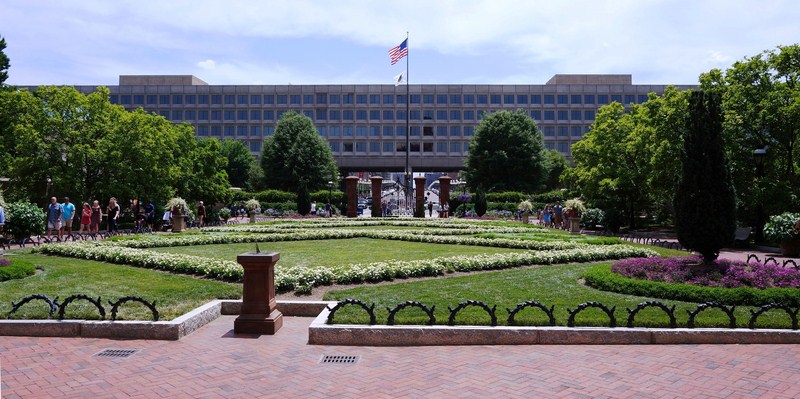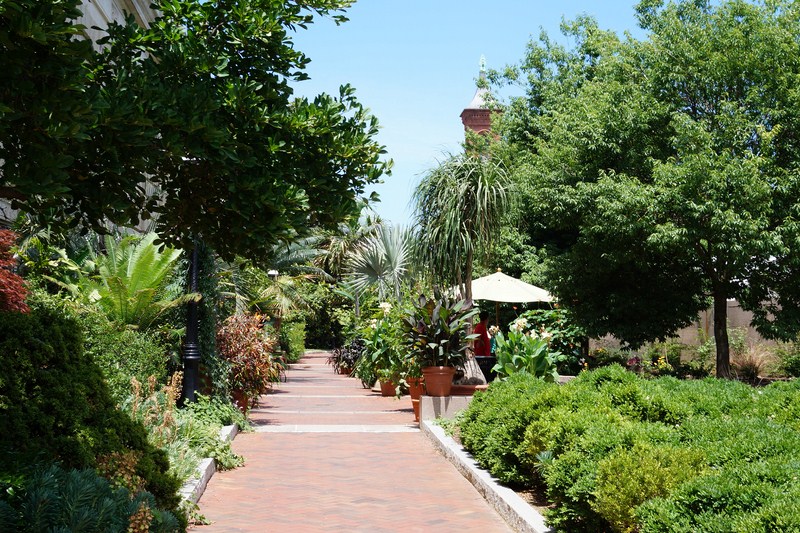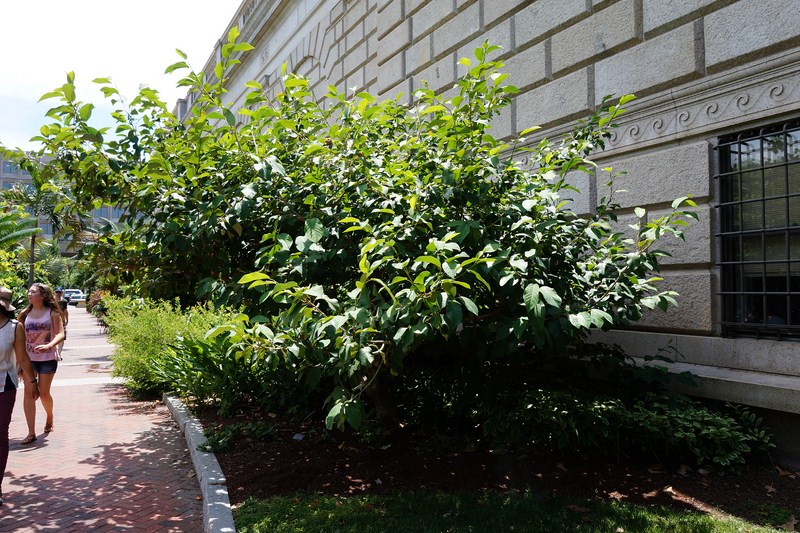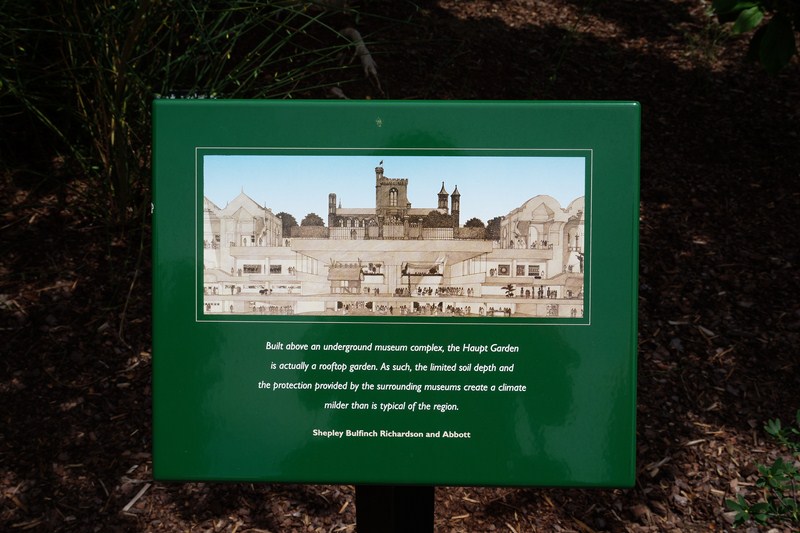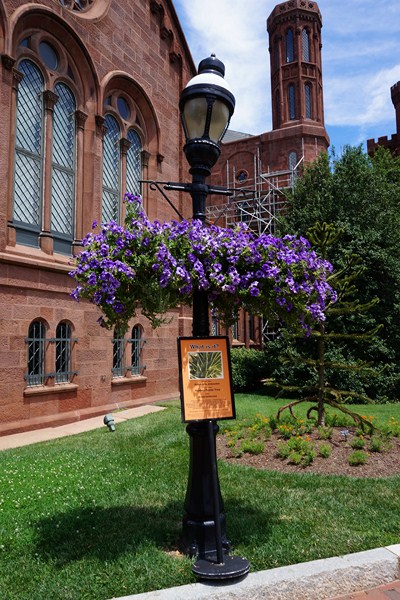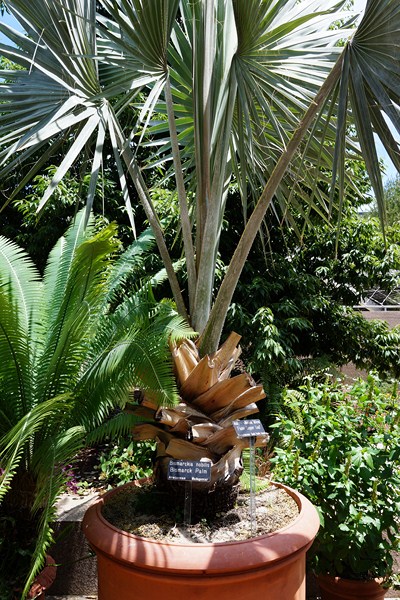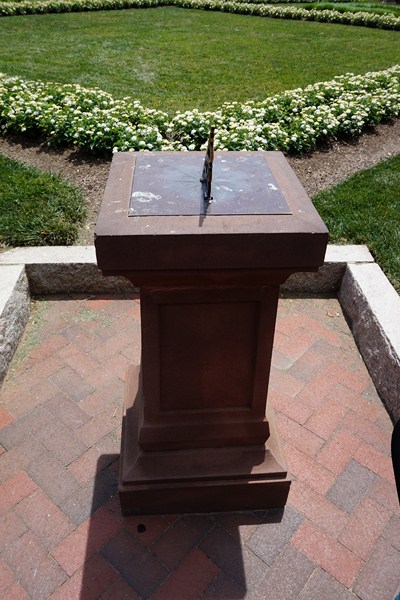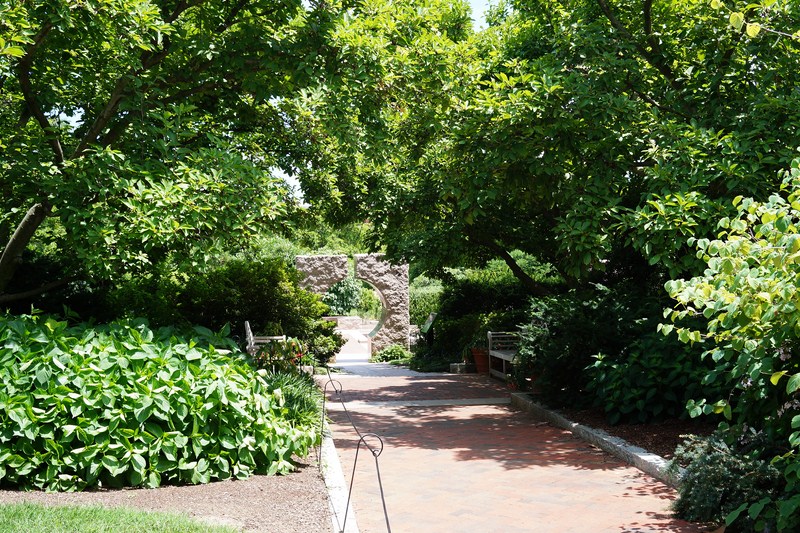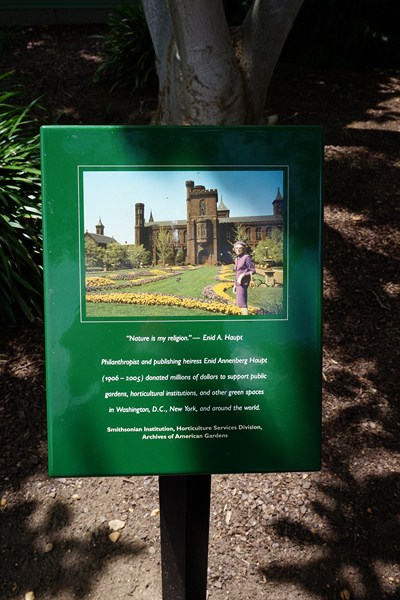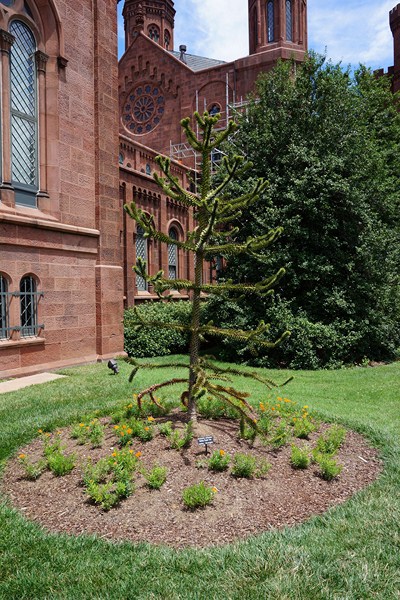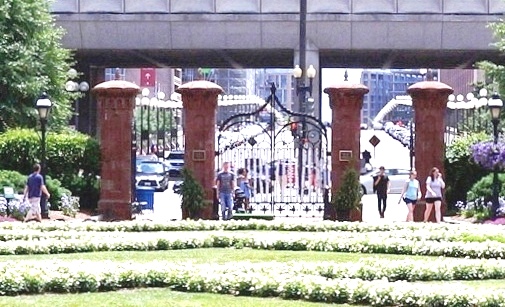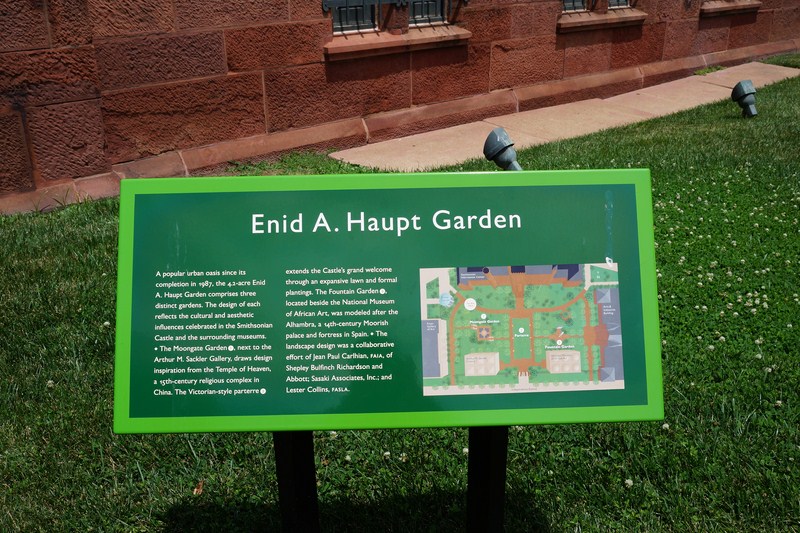The 1.7-hectare (4.2 acre) Enid A. Haupt Garden, a public garden in the Smithsonian complex, adjacent to the Smithsonian Castle (formally the Smithsonian Institution Building) on the National Mall, replaced an existing Victorian Garden which had been built to celebrate the nation’s Bicentennial in 1976.
Check out “Smithsonian Castle”
Designed to be a modern representation of American Victorian gardens as they appeared in the mid to late 19th century, it was opened on May 21, 1987 as part of the redesigned Castle quadrangle and was named after Enid A. Haupt who provided the $3 million endowment which financed its construction and maintenance.
More broadly, the quadrangle redesign project and the Smithsonian Gardens were part of the vision of S. Dillon Ripley, the eighth Secretary of the Smithsonian, who felt that the museum experience should extend beyond the museums’ buildings into the outdoor spaces.
The gardens landscape design features the collaborative efforts of architect Jean Paul Carlhian (principal in the Boston firm of Shepley, Bulfinch, Richardson and Abbott), Lester Collins (Sasaki Associates Inc. of Watertown, Massachusetts) and James R. Buckler (founding director of the Smithsonian’s Office of Horticulture).
The symmetrically patterned and carefully manicured parterre (French for “on the ground”), behind the Smithsonian Castle in the south yard, is the central feature of the garden. Measuring 44 m. (144 ft.) long by 20 m. (66 ft.) wide, it is flanked by the Moongate Garden to the west and the Fountain Garden to the east.
The formal parterre, an ornamental garden type originating in 16th century Renaissance Italy and typically associated with the elaborate designs of the Victorian era, predates the creation of the Enid A. Haupt Garden and was inspired by a design from the 1876 Centennial Exposition Horticultural Hall in Philadelphia. When the Enid A. Haupt Garden was created, this parterre was saved and incorporated into the new formal garden. It complements the ornate architecture of the adjacent Smithsonian Castle.
With a changing palette of colors, shapes and textures, the layers of colorful, low-growing plants, meticulously laid out in symmetrical patterns, make up the design of the parterre that are changed every six months, typically in September and May. They fill out the series of diamonds, fleurs-de-lis, and scallops or swags. Within a circle in the northeast portion of the parterre is the Andrew Jackson Downing Urn.
Other notable design features include saucer and tulip magnolias, brick walkways, and historical cast-iron garden furnishings from the Smithsonian Gardens‘ Garden Furniture Collection. A 12 square, horizontal sundial, sitting just outside the south door of the Smithsonian Castle, was built in 1994 by David Todd (a clock expert at the National Museum of American History) and David Shayt. Calibrated for the longitude and latitude of its location, it is subdivided into 15 minute increments and has a compass rose. Its dial sits atop a rectangular granitepedestal.
Check out “National Museum of American History: Kenneth E. Behring Center“
The Moongate Garden, designed by architect Jean Paul Carlhian, was inspired by the gardens and architecture of the Temple of Heaven (Beijing, China) which was designed using a geometrical, axial layout, centered on the cardinal points of the compass. It was meant to take its visitors to a relaxing place surrounded by water where they may absorb the cool air emanating from the water.
Check out “The Temple of Heaven“
Granite and water (the dominant feature in the garden) are used abundantly in this garden. In Chinese culture, rocks (thought to symbolize the body of the earth) and water (symbolizing the spirit of earth) symbolizes the basic constituents of nature. Water gives off shimmering light effects in the sunlight and reflects the glow of the moon at night while its reflection gives the garden the appearance of being larger than it actually is.
Its overall circular pool design was meant to remind us of the windows in the National Museum of African Art (a technique that Carlhian also applied to the Fountain Garden). To align important features of the Arts and Industries Building with the Freer Gallery of Art, Carlhian utilized his so-called “pinwheel treatment,” with the path leading into the Moongate Garden entering at the southwest corner and exiting at the northeast corner.
The Moongate Garden has two 9-ft. high pink granite moon gates on either side of a pool that is paved with half-round pieces of granite, strategically placed to frame important features of the surrounding landscape. Two more gates, laid flat, provide seating in opposite corners.
The Fountain Garden, beside the entrance to the National Museum of African Art, was also designed by Jean Paul Carlhian and was modeled after the Court of the Lions at Alhambra, a 13th-century Moorish palace and fortress in Granada, Andalusia, Spain.
As with most Islamic gardens, the Fountain Garden is geometrically symmetrical and suggests a walled paradise, an important concept in early Persian and Islamic garden design. It includes a central fountain and water channels (those on top of the low walls around the central fountain were designed to represent the four rivers of paradise described in the Koran). The bubbling center jet of the central fountain symbolizes paradise/eternity itself. A chadar (“veil”) of cascading water, at the garden’s north end, streams down a tile wall.
Enid A. Haupt Garden: 1037-1057 Independence Avenue SW and L’Enfant Plaza SW, Washington, D.C. Tel: 202.633.2220. E-mail: gardens@si.edu. Open daily, 8:30 AM to 5:30 PM. Admission is free. Coordinates: 38°53′17″N 77°01′34″W.

